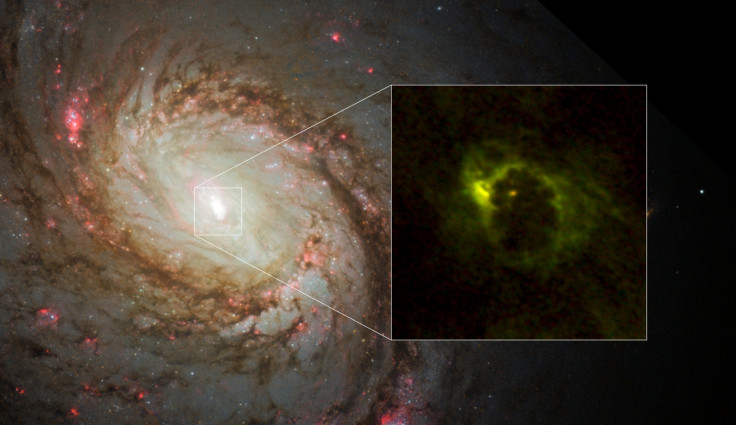Scientists make rare discovery that challenges our current understanding of galaxies
Scientists discover a rotating disk galaxy that may have been born much before predicted.
In a rare discovery, astronomers may have discovered the most distant rotating disk galaxy located deep in the universe. Named as DLA0817g, the galaxy is believed to be one of the galaxies to exit. Also, it challenges the scientists' current and traditional understanding of galaxy formation.
According to the news release on UC Santa Cruz news center, the discovery was made using Atacama Large Millimeter/submillimeter Array (ALMA). The galaxy that is nicknamed the Wolfe Disk after the late astronomer Arthur M. Wolfe was apparently formed only 1.5 billion years after the Big Bang. This means that such a galaxy has been existing in our universe much before it was predicted. This has forced scientists to question the traditional models of galaxy formation and the history of the cosmic matter. By far, this is the earliest and the most distant such disc ever detected.
"Its properties are astonishingly similar to our own galaxy, despite being only 1.5 billion years old," said co-author J. Xavier Prochaska, professor of astronomy and astrophysics at UC Santa Cruz.
It is said that such a galaxy has been existing in our universe much before than it was predicted. This has forced scientists to question the traditional models of galaxy formation and the history of the cosmic matter. By far, this is the earliest and the most distant disc ever detected.
"While previous studies hinted at the existence of these early rotating gas-rich disk galaxies, thanks to ALMA we now have unambiguous evidence that they occur as early as 1.5 billion years after the Big Bang," said lead author Marcel Neeleman of the Max Planck Institute for Astronomy in Heidelberg, Germany.
The discovery of the Wolfe Disk challenges galaxy formation simulations that scientists have been using for years. These models believe that current galaxies emerged through "many mergers of smaller galaxies and hot clumps of gas." Also, previous models suggest that well-formed disk emerges around six billion years after the Big Bang. However, the new discovery shakes up previous theories whereby astronomers found such a disk galaxy when the universe was only 10 percent of its current age.
"Most galaxies that we find early in the universe look like train wrecks because they underwent consistent and often violent merging," explained Neeleman. "These hot mergers make it difficult to form well-ordered, cold, rotating disks as we observe in our present universe."
Meanwhile, it is believed that it is one of the "most productive disk galaxies in the early universe" with at least a 10 times higher star formation rate than the milky way.
"The fact that we found the Wolfe Disk using this method tells us that it belongs to the normal population of galaxies present at early times," said Neeleman of the rare discovery. "When our newest observations with ALMA surprisingly showed that it is rotating, we realized that early rotating disk galaxies are not as rare as we thought and that there should be a lot more of them out there."

The study was published in a journal called "Nature."
© Copyright IBTimes 2024. All rights reserved.





